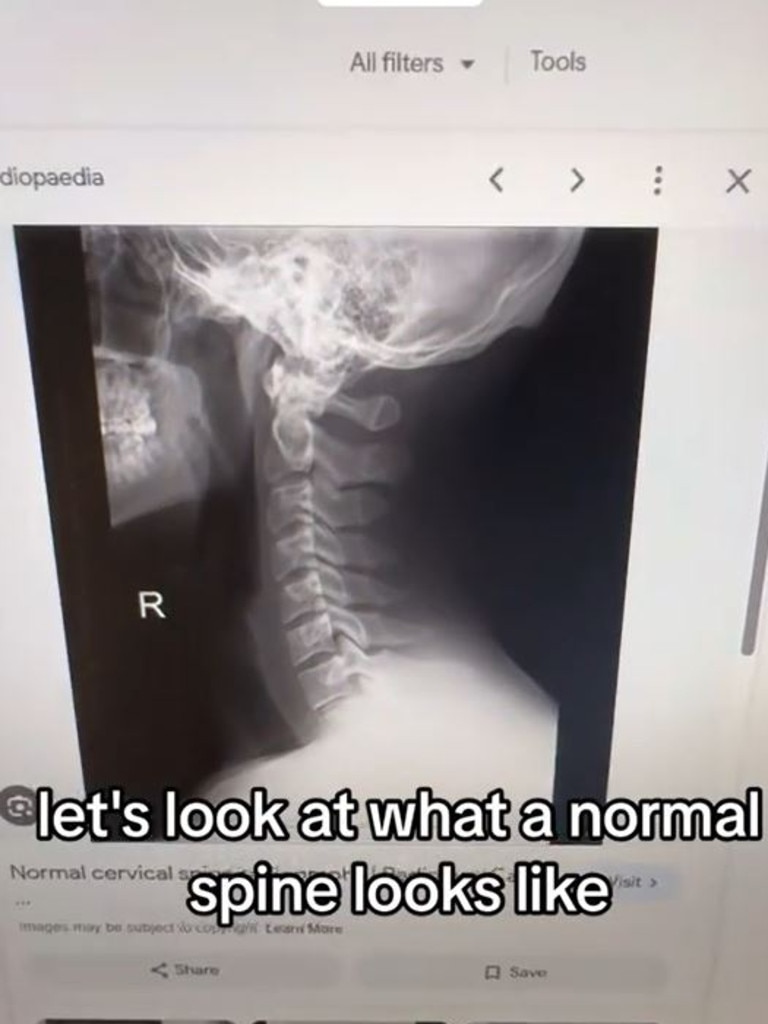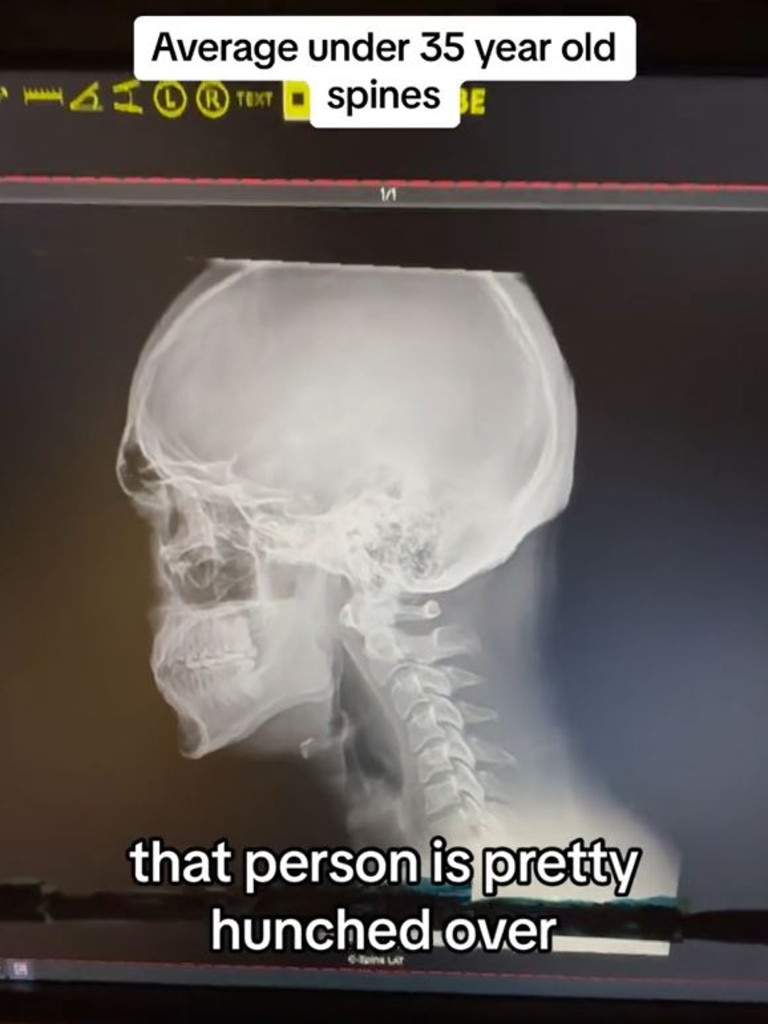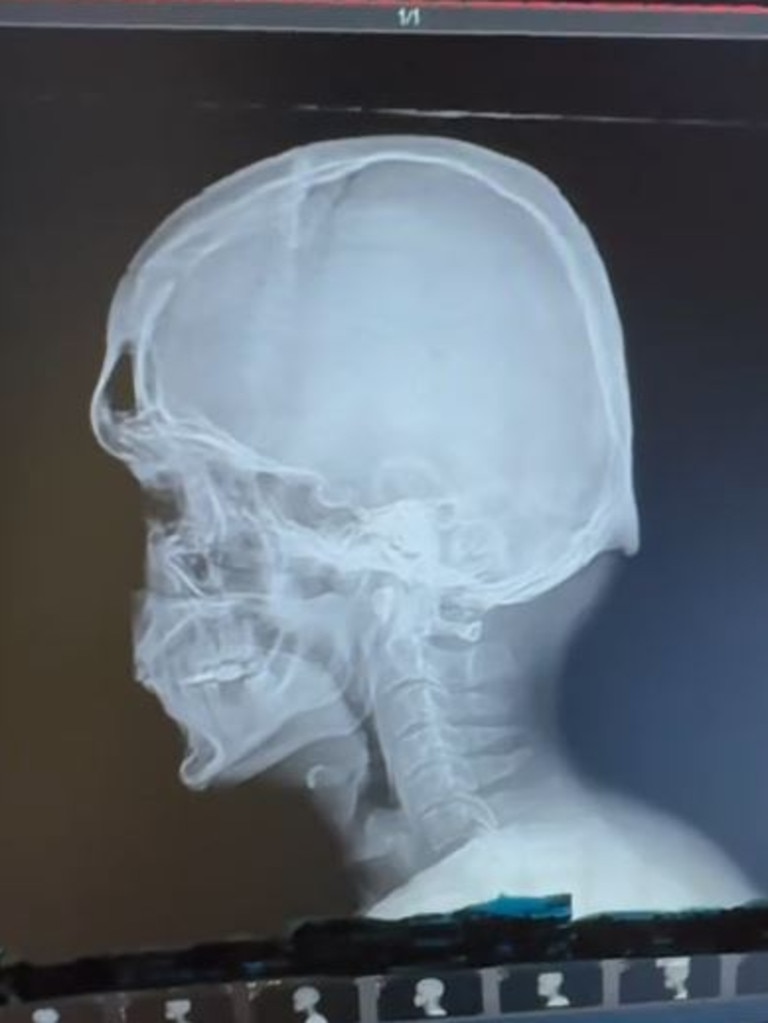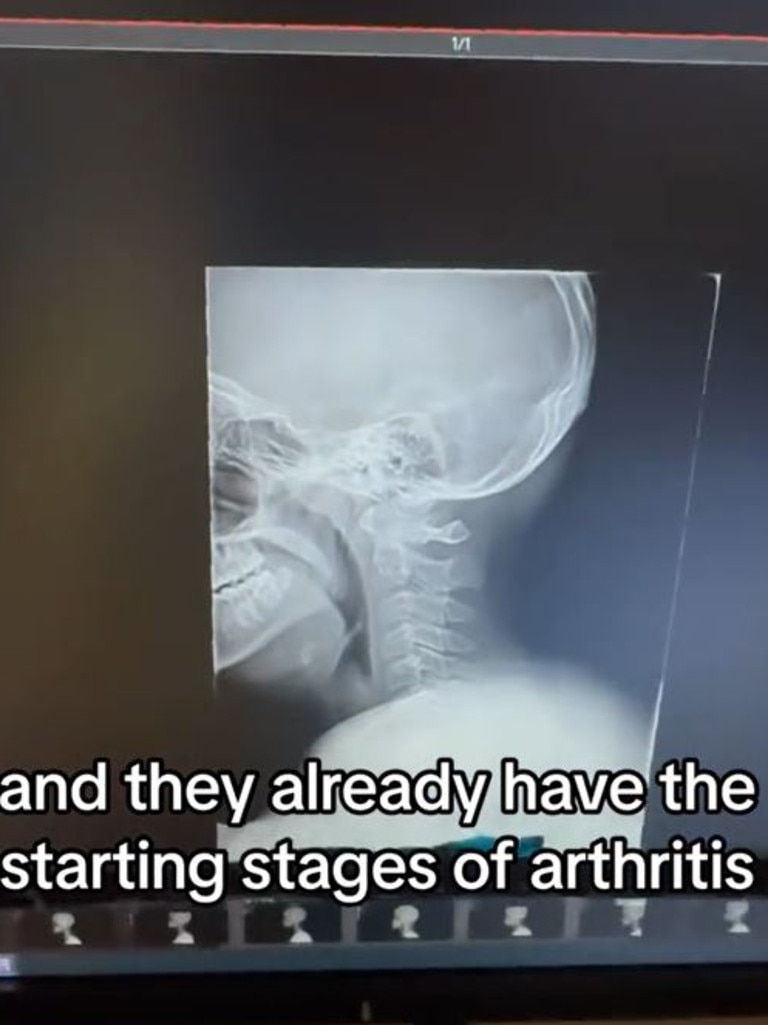Gen Z and Millennials are turning into ‘old, hunched over people’, doctor claims
A series of X-rays have Gen Zers convinced they are “cooked from every direction”, with one common act having a disturbing impact on the youngsters.
Lifestyle
Don't miss out on the headlines from Lifestyle. Followed categories will be added to My News.
A doctor has warned that the younger generations are rapidly turning into “old, hunch backed people”, with a series of X-rays taken over a two-month period revealing the shocking extent of the issue.
American chiropractor, Jake Boyle, recently made a video showing how young people’s spines were becoming increasingly malformed due to slumping over mobile phones and computers for hours on end.
“If you are under 35 you need to pay attention to this. We are all turning into those old hunched over people and there’s a reason behind it,” he said.
Dr Boyle started by showing an X-ray of what a normal spine looks like, noting it has a slight “reverse curve”.
“All the spinal segments are starting to go backwards like that. That’s what we want, that’s what a good spine looks like,” he said.
He then showed an X-ray from a person born in October 1997, showing the spine and head in a more forward position and the start of a hunch forming on the back.
“This is a young person that is turning into an old, hunched over person already,” he said of the 26-year-old.


Dr Boyle then showed more examples of younger Millennials and Gen Zers born between 1992 and 2011 who all exhibited the same spinal issues.
Some X-rays even showed a hornlike growth forming at the base of the skull.
This is known as an External Occipital Protuberance (EOP) and can be caused by increased amounts of stress on the muscles, tendons, and ligaments in that area due to forward head posture.
In one of the X-rays, Dr Boyle claimed the 12-year-old patient was already showing signs of the starting stages of arthritis.
“This was just in two months of taking X-rays guys. All of the younger generation is starting to turn into those old hunched over people because we’re all on our cell phones looking down at TikTok,” he said.
“Bring those cell phones up, otherwise you will be an old hunched over person with arthritis before you’re 35.”


The video has gained over 4.6 million views on TikTok, with the comment section flooded with young people asking how they can prevent a spinal hump from occurring or reverse it if they are already in the early stages of forming one.
“OK you scared me, how do I fix it?” one person said.
“I’m younger than most of these people and already more hunched, am I cooked?” another asked.
One commenter said watching the video made them immediately straighten their back, while another claimed that Gen Z was “cooked from every direction”.
In a follow-up video, the chiropractor revealed a series of lifestyle changes, stretches and exercises that can be done to help minimise the risk of developing a hunch.
For those who sit at a computer for the majority of their work day, it is recommended to keep the screen at eye level or above, rest your arms on an arm rest and have your keyboard at the same level as your arms.
Dr Boyle begged people not to hunch over their keyboards and instead focus on keeping their back straight and everything level.
He also encouraged getting up and walking around after being at a desk for more than an hour, as the more time you are sitting down, the more likely you are to go into the forward head position.
Having your car seat reclined too far while driving can also negatively impact your posture.


Sleeping positions are another major factor, with Dr Boyle noting: “You spend eight hours a night in your bed, so that is potentially eight hours a night that you are moulding your spine to poor posture.”
He said the best way to sleep is on your back with as thin of a pillow as possible. Having a pillow that is too thick can push your head into the forward posture position.
“Another way to sleep is on your side. I am OK with that, so long s we have a large enough pillow that isn’t cranking our head down, or a thin enough pillow that isn’t cranking our head up,” he said, adding that a pillow between the legs ensures the pelvis is well aligned.
The “worst” way to sleep is on your stomach, which results in the head being turned to the side, resulting in “eight hours of rotation and torsion on those traps”.
There are also a number of exercises that can be done, with Dr Boyle suggesting one move called the “wall angel”.
“Put your butt, upper back and head, press them against the wall, keep your arms pressed against the wall and do a snow angel,” he said.
“This is going to increase the strength of your anterior neck muscles and the mobility of your shoulders. Do this 15 to 20 times in the morning, afternoon and night.”
Originally published as Gen Z and Millennials are turning into ‘old, hunched over people’, doctor claims









